#hybrid cloud implementation
Explore tagged Tumblr posts
Text
Streamline Your Workflow with Microsoft 365 Suite Deployment Services in 2025
In today’s fast-paced business environment, achieving efficiency and seamless collaboration is critical to staying ahead. The Microsoft 365 Suite offers a comprehensive range of tools designed to streamline workflows, enhance productivity, and foster better communication. However, to unlock its full potential, businesses need tailored deployment services that align with their specific goals and operational requirements.

Why Microsoft 365 Suite is Essential in 2025
Unified Communication and Collaboration Microsoft Teams, SharePoint, and Outlook provide integrated platforms that support real-time communication, file sharing, and collaboration across teams—whether they’re in the same office or dispersed globally.
Enhanced Productivity with AI and Automation Tools like Microsoft Viva and Power Automate bring AI-driven insights and automation capabilities, enabling businesses to reduce manual tasks and focus on strategic initiatives.
Scalable and Secure Solutions With advanced security features and compliance tools, Microsoft 365 ensures businesses can scale their operations confidently while safeguarding sensitive data.
Flexibility for Hybrid Work Models The suite’s cloud-based architecture empowers employees to work from anywhere, ensuring a seamless transition between remote and on-site operations.
The Importance of Professional Deployment Services
While Microsoft 365 offers robust features, implementing it effectively can be challenging without expert guidance. Professional deployment services are crucial for:
Customised Solutions: Tailoring the suite’s features to your business’s unique needs ensures maximum ROI.
Efficient Migration: Migrating data from legacy systems with minimal disruption requires technical expertise.
Training and Support: Ensuring your teams are equipped to leverage the suite effectively enhances adoption rates.
Ongoing Optimisation: Regular assessments and updates keep your systems aligned with evolving business objectives.
Addressing Modern Business Challenges
Reducing Silos By integrating tools like Teams, OneDrive, and Planner, organisations can eliminate data silos and promote cross-departmental collaboration.
Improving Decision-Making Power BI within Microsoft 365 provides actionable insights through real-time analytics, enabling leaders to make informed decisions swiftly.
Boosting Employee Engagement Features like Viva Insights prioritise employee well-being and productivity, helping organisations retain top talent.
Key Considerations for Microsoft 365 Deployment
Assess Your Business Needs: Understand your current challenges and how Microsoft 365 can address them.
Plan for Change Management: Foster a culture of adaptability to ensure smooth adoption.
Focus on Security: Leverage tools like Microsoft Defender to mitigate cybersecurity risks.
Partner with Experts: Collaborate with experienced providers to ensure a seamless deployment process.
Conclusion
Microsoft 365 Suite is not just a productivity tool; it’s a strategic asset for driving innovation and efficiency in 2025. By partnering with a trusted deployment service provider, businesses can ensure a smooth transition, empowering their teams to achieve more while staying agile in a competitive landscape.
Ready to revolutionise your workflow? Explore how Microsoft 365 Suite deployment can transform your business today.
#Microsoft 365 Suite deployment#Microsoft 365 migration services#Cloud-based collaboration tools#Hybrid work solutions#Microsoft Teams integration#Secure data management#AI-driven business tools#Customised Microsoft 365 implementation#Enhanced business collaboration#Power BI analytics for businesses#Microsoft 365 professional deployment#Data security in Microsoft 365#Employee engagement with Microsoft Viva
0 notes
Text
Empowering Small Businesses with Cutting-Edge IP PBX and Telephony Solutions
Unlike traditional PBX systems that rely on conventional phone lines, IP PBX Phone Systems for Small Business uses the internet to route calls, providing greater flexibility, reduced costs, and enhanced functionality. For more details visit here :- https://medium.com/@voxprosolution/empowering-small-businesses-with-cutting-edge-ip-pbx-and-telephony-solutions-b957eac5f336
#Cloud Telephony Providers#Hybrid Telephone System Providers#IP PBX Solution for Small Business#IP PBX Phone Systems for Small Business#Voice Logger Manufacturer#Cloud Conference Bridge Solutions#Work From Home Telephony Solutions#GSM Dialer Solution Provider#CRM Implementation Services
0 notes
Text
Part 7 Trolls Headcanons/ Theories/ Thoughts/ Ideas
Part1 Part2 Part3 Part4 Part5 Part6 Part8 Part9 Part10
Trolls - varies amongst the tribes but hair length and thickness is a good indication of their physical strength and health. So long, thick hair means they're healthy and can lift heavy weights. E.g. Smidge, Bruce, Boom. Whereas short, wild or thin hair means they could be older, unhealthy or just not physically strong. E.g. Peppy and Thrash.
Trolls - eventually a hybrid Troll (e.g. Techno/Funk) is born in Trollstopia and the parents name the baby after Poppy.
Trolls - JD and King Peppy do the same pose in some stock images. I like to think it's like a Pop Village salute. (It probably has an actual meaning)
Putt Putt Trolls - all of them are wearing the same outfits because they used Bergen sized socks from the golf courses souvenir stand.
Poppy - When something is wrong and the brothers don't want her to know, she can immediately tell because they call her 'Queen Poppy'.
Poppy - besides giving Clay and Viva their titles, she considers the other brothers unofficially part of her 'court' as well. (She might knight them later on, who knows?)
Bruce - mortifies his kids by trying to use slang. "That was so very lit!" "Daaaaaaaaaadddddd"
Clay - bruises like a damn peach.
Clay - Viva made him co-leader after she gave up on the notion of being immediately rescued and realized Clay was already constructing and implementing long term settlement plans.
Clay - like the other Putt-Putt Trolls, he has basically become Nocturnal. Even with this, he pulls 'allnighters' to finish any work he has, so his sleep pattern is very inconsistent.
John Dory - always has some kind of weapon on him at all times.
John Dory - tends to manspread when sitting.
John Dory - has been targeted by Bounty Hunters before, resulting in a gnarly injury on his hand he now covers with his glove.
John Dory - for a time he was convinced that he was the last Pop Troll
Floyd - went through the seven stages of grief over his own death.
Floyd - can mix drinks. Messily. Was dating a bartender once and picked up some things from him.
Branch - will hold onto Poppy in his sleep like she'll disappear if he lets go.
Cloud Guy - gave Branch 101 reasons why he should officiate his and Poppy's wedding.
@misscinnamonroll16 😉 💕
#trolls#dreamworks trolls#trolls band together#trolls branch#trolls movie#trolls clay#trolls brozone#trolls bruce#trolls 3#trolls floyd#trolls john dory#brozone#broppy#branch x poppy#queen poppy#trolls poppy#trolls broppy
162 notes
·
View notes
Text

Celestial Dragon (Tianlong)
Legends of the Dragon
The myriad legends of the Chinese Dragon permeate ancient Chinese civilization and shaped their culture even today. Its benevolence signifies greatness, goodness and blessings. Instead of being feared and hated the Chinese dragons are highly respected creatures of good fortune that bring ultimate abundance, prosperity and good fortune. Chinese mythology says dragons control the rain, rivers, lakes, and seas. Many Chinese cities have pagodas where people used to burn incense to ask the dragons to favor their crops or change the weather. Dragons are referred to as the divine mythical creature.
As an animal possessed of magical abilities the Chinese dragon is able to shrink to the size of a silk worm; and then swell up to fill the entire space between heaven and earth. It can make itself visible or invisible, as it so chooses. It can take on human form or that of another animal to carry out some secret mission.
Everything connected with Eastern Dragons is blessed. The Year of the Dragon that takes place ever twelve years is lucky. Present-day Oriental astrologers claim that children born during Dragon Years enjoy health, wealth, and long life. (1964 and 1976 were Dragon Years.
Dragons are so wise that they have been royal advisors. A thirteenth-century Cambodian king spent his nights in a golden tower, where he consulted with the real ruler of the land a nine-headed dragon. Eastern Dragons are vain, even though they are wise. They are insulted when a ruler doesn’t follow their advice, or when people don’t honor their importance. Then, by thrashing about, dragons either stop making rain and cause water shortages, or they breathe black clouds that bring storms and floods.
Types of Dragons
There is more than one type of dragon depicted in Chinese art. In early times there were four main kinds of dragon with many other sub-divisions:
The heavenly or celestial dragon (tian-long) was the celestial guardian who protected the heavens, supporting the mansions of the gods and shielded them from decay. The Tian-long could fly and are depicted with or without wings they are always drawn with five toes while all other dragons are shown with four or three toes.
Spiritual Dragon
The spiritual dragons (shen-long) were the weather makers. These giants floated across the sky and due to their blue color that changed constantly were difficult to see clearly. Shen-long governed the wind, clouds and rain on which all agrarian life depended. Chinese people took great care to avoid offending them for if they grew angry or felt neglected, the result was bad weather, drought of flood.
Earth Dragon
Dragons that ruled the rivers, springs and lakes were called Earth dragons (di-long). They hide in the depths of deep watercourses in grand palaces. Many Chinese fairy tales spin yarns of men and women taken into these submarine castles to be granted special favors or gifts. Some of the di-long even mated with women to produce half-human dragon children.
Treasure Dragon
Believed to live in caves deep in the earth the (fu-can-long) or treasure dragon had charge of all the precious jewels and metals buried in the earth. Each of these dragons had a magical pearl that was reputed to multiply if it was touched. This pearl was as symbol of the most valuable treasure, wisdom.
Over the ages many other forms and hybrid animals related to the Chinese dragon have emerged as part of dragon lore. There are said to be nine distinct offshoots of the dragon that are carved as mystical symbols on doors, gates, swords, and other implements as means of protection and as harbingers of good fortune.
The Dragon Pearl
The luminous ball or pearl often depicted under the dragon’s chin or seen to be spinning in the air, pursued by one or two dragons is thought to be a symbolic representation of the ‘sacred pearl’ of wisdom or yang energy. Pearl symbolism, like lunar symbolism arises from Daoist roots and the connections, are extremely The dragon's pearlcomplex. This pearl can be said to stand most often for ‘truth’ and ‘life’ – perhaps even everlasting life which is made available to those who perceive the truth and attain enlightenment.
The dragon’s pearl can also be thought of as a symbol for universal Qi the progenitor of all energy and creation. The dragons seem to be depicted in attitudes of pursuit. He is seen to be reaching out eagerly to clutch at the elusive object, mouth open in anticipation and eyes bulging with anticipation of achieving the prize afforded by clutching the pearl.
In connection with the dragon the pearl has been called the image of thunder, of the moon, of the sun, of the egg emblem of the dual influences of nature, and the ‘pearl of potentiality’. The pearl is most often depicted as a spiral or a globe. In some paintings it is sometimes red, dragons eggsometimes gold, sometimes the bluish white of a true pearl. The pearl is often accompanied by little jagged flashes that seem to spark out from it, like flames; and it almost always has an appendage in the form of a small undulating sprout, not unlike the first young shoot from a bean.
In Daoist concepts the moon, pearls, dragons and serpents are inextricably linked. Like the snake that is reborn when it sheds its skin, the moon is reborn each month, and both are symbols of immortality. Like the dragon, the moon is always associated with water; its undeniable power over the tides is believed to extend to all liquids on earth. The dragons that lived in the sea were said to be inordinately fond of pearls and collected them and watched over them in great submarine palaces. -The Dragons of China
62 notes
·
View notes
Text
What happened to the Main 6? Part 2: Fluttershy

(Art by me, edited base by ElementBases on DA, check out better resolution pic here)
Early Life
Fluttershy was born in Cloudsdale to Florence and Cloudsdale Shy, along with her younger brother, Zephyr Breeze. Unknown to her family at the time, she was part of a set of triplets, but due to a corrupt hospital's deception, her sisters were secretly given away for adoption.
From an early age, Fluttershy displayed a strong affinity for animals, preferring their company over that of ponies. Her timid and gentle nature often made her an outsider among the competitive pegasi of Cloudsdale. However, during a fateful fall from the clouds, she discovered her true calling on the ground, finding solace among Equestria’s wildlife. At 18, she moved to Ponyville to pursue veterinary studies and work as a vet technician, dedicating her life to the care of animals.
Life Before Sombra
While living in Ponyville, Fluttershy became well known for her kindness and skill with animals. She was a close friend to Twilight Sparkle, Rainbow Dash, Pinkie Pie, Rarity, and Applejack—the legendary Elements of Harmony. As the Element of Kindness, she played a key role in defending Equestria from various threats, though she always preferred peaceful solutions.
Fluttershy maintained a modest life, tending to her animal sanctuary and forming a deep friendship with Tree Hugger, a fellow pacifist and nature lover. While she never pursued romance due to her aromantic and asexual identity, she was content in the simple life she had built.
However, when war broke out between Equestria and the Crystal Empire, her world was forever changed. She despised the cruelty inflicted upon animals and civilians alike, questioning whether Celestia’s rule had truly been just. When Sombra emerged victorious, Ponyville was transformed into an agricultural colony, and Fluttershy was sent to Canterlot to continue her veterinary work under the new regime.
Life After Sombra
Fluttershy's beauty and poise did not go unnoticed. Starlight Glimmer, now a high-ranking official in Sombra’s Empire, saw her as the perfect symbol of grace and obedience, turning her into a figure of imperial propaganda. Even King Sombra himself became intrigued. However, rather than forcing her into submission, he pursued her, gradually earning her respect.
Despite her lack of romantic feelings, Fluttershy recognized that marrying Sombra could grant her the influence needed to protect the creatures of the Empire. Eventually, she agreed to become Noble Imperial Consort—not out of love, but as a calculated decision to safeguard what she cherished most. Over time, Sombra granted her authority over agriculture and animal welfare, allowing her to implement reforms that improved conditions for both creatures and farmers across the Empire.
As Empress, Fluttershy bore three children:
Warmonger – A unicorn strategist, fiercely loyal to Sombra.
Jezabelle – A powerful and cunning alicorn, often underestimated due to her charm.
Sombercry – A pegasus-bat hybrid, silent but deadly in combat.
While she was never a traditional wife to Sombra, they developed a mutual respect, with Sombra valuing her intelligence and unwavering commitment to her causes.
The Lost Sisters
Years into her reign, Fluttershy’s life took an unexpected turn when she met Lily Lace, one of Sombra’s newer wives. Their uncanny resemblance sparked an investigation, revealing the shocking truth—Fluttershy had been separated from her two sisters at birth due to a corrupt hospital’s scheme.
Sombra personally ordered an extensive search, eventually locating their third sister, Chic Flower, who had been living in poverty in Manehattan. Upon their reunion, both sisters were given noble status, with Lily Lace choosing to annul her marriage to Sombra in favor of her true love. Chic Flower, on the other hand, became an icon of imperial beauty, securing her future in the court.
For Fluttershy, the discovery of her lost siblings was both a joy and a sorrow, forcing her to confront the fractured nature of her past. Though she remained close to her parents and Zephyr Breeze, her new reality as an Empress left an undeniable distance between them.
Relationships
Romantic Relationships
Fluttershy, being aromantic and asexual, never sought love in a traditional sense. However, her political marriage to Sombra became one of deep mutual respect. Despite their lack of romantic affection, they understood each other’s ambitions and played their roles well.
Friendships
Before Sombra’s rule, Fluttershy’s closest friends were the Elements of Harmony, particularly Rainbow Dash and Rarity. However, after the war, many of those relationships faded. Rainbow Dash became a brainwashed loyalist to the Empire, while Rarity withdrew from high society, seeing Fluttershy’s choices as betrayal.
Instead, Fluttershy found companionship among those within the imperial court:
Tree Hugger – Her personal maid and closest confidante, sharing her passion for nature.
Zecora – A wise alchemist who secretly aided her in maintaining peace for Equestria’s creatures.
Meadowbrook – A healer and fellow scholar of natural medicine, working alongside Fluttershy on agricultural projects.
Her strongest bond, however, remained with her lost sisters, Lily Lace and Chic Flower, who provided her with a newfound sense of family.
Family Relationships
Zephyr Breeze: Though they remained in contact, Fluttershy’s rise to power created a rift between them. Zephyr was never comfortable with her role in the Empire, choosing to live a quiet life far from the court.
Florence & Cloudsdale Shy: She ensured their comfort and safety, elevating them to nobility, though their interactions became increasingly formal over time.
Her Children: While she never actively sought motherhood, she did her best to raise them with kindness. However, each child grew up with vastly different perspectives on the Empire, leading to complicated family dynamics.
#mlp friendship is magic#mlp g4#mlp fim#my little pony#mlp au#dark fantasy#dark mlp au#mlp au lore#mlp fandom#mlp#mlp redesign
4 notes
·
View notes
Text
Top 5 Reasons Companies Partner with Joaquin Fagundo for IT Strategy
In today’s fast-paced digital world, businesses are constantly evolving to keep up with the changing technological landscape. From cloud migrations to IT optimization, many organizations are turning to expert technology executives to guide them through complex transformations. One such executive who has gained significant recognition is Joaquin Fagundo, a technology leader with over two decades of experience in driving digital transformation. Having worked at prominent firms like Google, Capgemini, and Tyco, Fagundo has built a reputation for delivering large-scale, innovative solutions to complex IT challenges. But what makes Joaquin Fagundo such a sought-after leader in IT strategy? Here are the Top 5 Reasons Companies Partner with Joaquin Fagundo for IT Strategy.

1. Proven Expertise in Digital Transformation
Joaquin Fagundo’s career spans more than 20 years, during which he has worked on high-stakes projects that require a deep understanding of digital transformation. His experience spans various industries, helping businesses leverage cutting-edge technologies to improve operations, enhance efficiency, and streamline processes.
Fagundo has helped organizations transition from legacy systems to modern cloud-based infrastructure, allowing them to scale effectively and stay competitive in an increasingly digital world. His hands-on experience in cloud strategy, automation, and enterprise IT makes him an invaluable asset for any business looking to adapt to new technologies. Companies partner with Joaquin Fagundo because they know they will receive strategic insights and actionable plans for driving their digital initiatives forward.
2. Strategic Cloud Expertise for Scalable Solutions
Cloud technology is no longer a trend—it is the backbone of modern businesses. Joaquin Fagundo has an extensive background in cloud strategy, having successfully led major cloud migrations for several large organizations. Whether it's migrating to a public cloud, optimizing hybrid infrastructures, or implementing cloud-native applications, Fagundo’s expertise helps businesses navigate these complexities with ease.
Companies partnering with Joaquin Fagundo can expect a tailored cloud strategy that ensures scalability and cost-efficiency. His deep knowledge of cloud services like AWS, Google Cloud, and Microsoft Azure enables him to develop bespoke solutions that meet specific business needs while minimizing downtime and disruption. His approach not only focuses on the technical aspects of cloud migration but also on aligning cloud solutions with overarching business goals, ensuring that companies can reap the full benefits of cloud technology.
3. Strong Track Record of Driving Operational Efficiency
Operational efficiency is a top priority for most businesses today. Companies partner with Joaquin Fagundo because of his exceptional ability to optimize IT operations and implement automation technologies that enhance productivity while reducing costs. Whether it’s through automating routine tasks or improving infrastructure management, Fagundo’s strategies enable organizations to streamline their operations and focus on growth.
Fagundo’s leadership in infrastructure optimization has allowed businesses to reduce waste, lower operational expenses, and improve the performance of their IT systems. His expertise in automation tools and AI-driven insights empowers businesses to become more agile and responsive to market demands. By partnering with Fagundo, companies are able to make smarter decisions, optimize resource utilization, and achieve long-term sustainability.
4. Business-Technology Alignment
One of the most significant challenges that organizations face is aligning their IT strategies with broader business goals. While technology can drive innovation and efficiency, it’s only effective when it is tightly integrated with the company’s vision and objectives. Joaquin Fagundo understands this concept deeply and emphasizes the importance of business-technology alignment in every project he undertakes.
Fagundo’s approach to IT strategy is not just about implementing the latest technology, but also ensuring that it supports the company’s strategic direction. He works closely with leadership teams to identify key business objectives and tailors technology solutions that drive measurable business outcomes. This focus on alignment helps companies ensure that every IT investment contributes to long-term growth, profitability, and competitive advantage.
5. Trusted Leadership and Change Management Expertise
Digital transformation and IT strategy changes often require a significant cultural shift within an organization. Change management is a critical component of any IT transformation, and this is an area where Joaquin Fagundo excels. Over the years, Fagundo has successfully led large teams through organizational changes, helping them navigate complex transformations with minimal resistance.
Fagundo’s leadership skills are a key reason why companies partner with him. He is known for his ability to inspire teams, foster collaboration, and lead through uncertainty. His people-centric approach to technology implementation ensures that employees at all levels are equipped with the knowledge and tools they need to succeed. Whether it’s through training sessions, workshops, or mentorship, Fagundo prioritizes the human aspect of IT transformation, making the process smoother and more sustainable for everyone involved.
Conclusion
Partnering with a technology executive like Joaquin Fagundo can provide businesses with a competitive edge in an increasingly digital world. With his deep technical expertise, strategic insight, and ability to align technology with business goals, Fagundo has helped countless organizations successfully navigate their IT challenges. Whether it's through cloud strategy, digital transformation, or operational optimization, Joaquin Fagundo is the go-to leader for companies looking to stay ahead of the curve.
If your company is ready to accelerate its digital transformation journey and leverage cutting-edge technology for long-term success, partnering with Joaquin Fagundo could be the first step toward achieving your business goals. With his proven track record, expertise, and leadership, Fagundo is the ideal partner to guide your organization into the future of IT strategy.
2 notes
·
View notes
Text
Cloud-based ERP and Business- Right Time to Migrate is Now
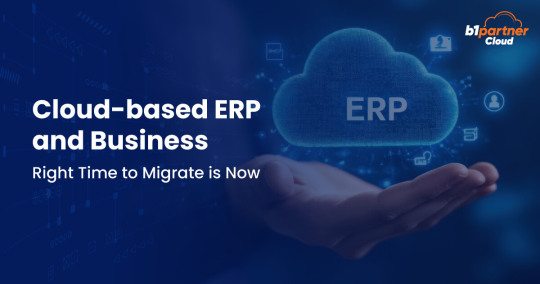
Many businesses rely on SAP Business One (SAP B1) to optimize their workflows and increase operational efficiency. However, small and medium-sized businesses (SMBs) with diverse business models require more advanced solutions to stay competitive in today’s fast-paced environment. Cloud technology can address this need, and the SAP Business One Cloud solution offers numerous benefits, giving businesses an edge over competitors.
In this article, we will explore the importance of cloud-based SAP Business One and key factors to consider before migrating your existing SAP B1 to the cloud. Let's begin by understanding the concept of cloud-based ERP.
Importance of Moving On-Premise SAP B1 to the Cloud
A cloud-powered ERP solution differs from an on-premise one in that it doesn’t require any hardware or software installation. As a managed cloud solution, it provides seamless access from anywhere, anytime, as long as there is an internet connection. SAP Business One Cloud is an example of such a cloud ERP solution.
In today’s environment, where digital transformation is key to success, transitioning to a cloud-based solution is a strategic decision for businesses. Migrating your on-premise SAP B1 to the cloud offers benefits such as scalability, agility, and flexibility, all at a lower cost.
For many SMBs and startups, this cloud-based solution helps reduce costs and enhances productivity through the power of cloud technology. However, it's essential to consider several factors during SAP Business One Cloud migration to fully leverage these benefits. Let’s look at these factors before outlining the step-by-step guide for migrating your SAP B1 system to the cloud.
Key Considerations Before Migrating to SAP Business One Cloud
SAP Business One Cloud can provide significant advantages for forward-looking SMEs. However, migrating your existing SAP B1 to the cloud is a complex process with many factors to consider. When deciding to migrate to SAP Business One Cloud, keep the following factors in mind:
1. Cost of Ownership
This is one of the most crucial factors, whether you're deploying SAP B1 to the cloud or migrating your current ERP. Cloud-based SAP Business One requires monthly subscription fees for access to licenses. However, this cost is much lower than that of on-premise solutions, which demand expensive in-house infrastructure and continuous maintenance.
2. Implementation Time
Implementing an on-premise SAP Business One ERP can take anywhere from 3 to 6 months. Many small and mid-sized businesses find this process cumbersome and time-consuming. Cloud migration is generally quicker and more efficient. A trusted managed cloud services provider can handle the migration process with minimal disruption and in less time.
3. Collaboration and Accessibility
With remote or hybrid working becoming the norm post-pandemic, it’s essential to ensure the cloud-based ERP is easily accessible for remote teams. The SAP B1 Cloud should be available to users anywhere, via the internet. Additionally, it should support seamless collaboration between different teams, no matter their location.
4. Reliability of Provider
The reliability of your cloud service provider is a critical factor. Many cloud providers offer cloud migration services, but it’s vital to choose a trusted and reputable one. Understand the terms of maintenance, upgrades, and technical support to ensure minimal disruptions during your SAP B1 migration to the cloud.
Step-by-Step Guide to Migrate Your Existing SAP B1 to the Cloud
SAP Business One Cloud is a popular solution for small and mid-sized businesses. Regardless of the industry, businesses can benefit from a cloud-based ERP solution by migrating their on-premise SAP B1. Here’s a step-by-step guide to completing the migration process effectively:
Step 1: Assess Existing Environment
Before initiating the migration, it’s crucial to evaluate your current setup and business needs. Examine dependencies, customizations, goals, and integrations with the help of a cloud service provider. This will help you identify potential challenges and ensure a smooth transition from on-premise to the cloud.
Step 2: Choose the Right Plan
Managed cloud providers offer various plans to meet different business needs. You’ll need to select a plan that aligns with your company’s size, goals, and performance requirements. Consider factors such as data storage, scalability, and processing power when choosing a package.
Step 3: Backup and Data Storage
During the migration process, protecting corporate data is vital. Make sure to back up your on-premise SAP B1 data to prevent any data loss or corruption during the migration. Using advanced migration tools can help ensure a seamless transfer and minimize downtime while maintaining data integrity.
Step 4: Application and Database Migration
The next step is migrating your SAP Business One application and databases to the cloud server. A technical team from your cloud service provider can assist in ensuring a secure and efficient migration. Once the transfer is complete, validate the functionality of your SAP B1 application in the new cloud environment.
Step 5: Integration and Performance Testing
Thoroughly test all integrations with other business applications and processes to ensure seamless connectivity in the cloud-driven environment. Extensive testing will help identify and resolve compatibility issues, ensuring uninterrupted workflows and synchronized data.
Step 6: User Training and Adoption
Prepare your team for the transition by providing comprehensive training on the new cloud-based environment. This will help users familiarize themselves with the enhanced features, accessibility, and collaboration tools available in the cloud.
Step 7: Go Live and Monitoring
Coordinate with your cloud provider’s support team to finalize the process and go live. Implement robust monitoring tools to track system performance, identify issues, and ensure the continued optimization of your SAP Business One application in the cloud.
By following these steps, you can ensure that your migration process is successful, allowing your business to unlock the full potential of a cloud-based SAP B1 solution.
Conclusion
Migrating your existing SAP Business One on-premise solution to the cloud can be a complex process, but with the right strategy and approach, it can bring substantial benefits to your business. By following the step-by-step guide and considering key factors during the migration, you can ensure a smooth transition and a successful cloud implementation. The right cloud partner will help you minimize downtime and safeguard your data, unlocking new possibilities with SAP B1 Cloud.
B1 Partner Cloud is a trusted SAP solutions provider, offering a full range of services from implementation to maintenance, upgrades, and cloud migration. Contact us today to learn more about how we can assist with your SAP Business One cloud migration.
Source - https://www.b1partner.cloud/cloud-based-erp-and-business-right-time-to-migrate-is-now/
2 notes
·
View notes
Text
What are the latest trends in the IT job market?

Introduction
The IT job market is changing quickly. This change is because of new technology, different employer needs, and more remote work.
For jobseekers, understanding these trends is crucial to positioning themselves as strong candidates in a highly competitive landscape.
This blog looks at the current IT job market. It offers insights into job trends and opportunities. You will also find practical strategies to improve your chances of getting your desired role.
Whether you’re in the midst of a job search or considering a career change, this guide will help you navigate the complexities of the job hunting process and secure employment in today’s market.
Section 1: Understanding the Current IT Job Market
Recent Trends in the IT Job Market
The IT sector is booming, with consistent demand for skilled professionals in various domains such as cybersecurity, cloud computing, and data science.
The COVID-19 pandemic accelerated the shift to remote work, further expanding the demand for IT roles that support this transformation.
Employers are increasingly looking for candidates with expertise in AI, machine learning, and DevOps as these technologies drive business innovation.
According to industry reports, job opportunities in IT will continue to grow, with the most substantial demand focused on software development, data analysis, and cloud architecture.
It’s essential for jobseekers to stay updated on these trends to remain competitive and tailor their skills to current market needs.
Recruitment efforts have also become more digitized, with many companies adopting virtual hiring processes and online job fairs.
This creates both challenges and opportunities for job seekers to showcase their talents and secure interviews through online platforms.
NOTE: Visit Now
Remote Work and IT
The surge in remote work opportunities has transformed the job market. Many IT companies now offer fully remote or hybrid roles, which appeal to professionals seeking greater flexibility.
While remote work has increased access to job opportunities, it has also intensified competition, as companies can now hire from a global talent pool.
Section 2: Choosing the Right Keywords for Your IT Resume
Keyword Optimization: Why It Matters
With more employers using Applicant Tracking Systems (ATS) to screen resumes, it’s essential for jobseekers to optimize their resumes with relevant keywords.
These systems scan resumes for specific words related to the job description and only advance the most relevant applications.
To increase the chances of your resume making it through the initial screening, jobseekers must identify and incorporate the right keywords into their resumes.
When searching for jobs in IT, it’s important to tailor your resume for specific job titles and responsibilities. Keywords like “software engineer,” “cloud computing,” “data security,” and “DevOps” can make a huge difference.
By strategically using keywords that reflect your skills, experience, and the job requirements, you enhance your resume’s visibility to hiring managers and recruitment software.
Step-by-Step Keyword Selection Process
Analyze Job Descriptions: Look at several job postings for roles you’re interested in and identify recurring terms.
Incorporate Specific Terms: Include technical terms related to your field (e.g., Python, Kubernetes, cloud infrastructure).
Use Action Verbs: Keywords like “developed,” “designed,” or “implemented” help demonstrate your experience in a tangible way.
Test Your Resume: Use online tools to see how well your resume aligns with specific job postings and make adjustments as necessary.
Section 3: Customizing Your Resume for Each Job Application
Why Customization is Key
One size does not fit all when it comes to resumes, especially in the IT industry. Jobseekers who customize their resumes for each job application are more likely to catch the attention of recruiters. Tailoring your resume allows you to emphasize the specific skills and experiences that align with the job description, making you a stronger candidate. Employers want to see that you’ve taken the time to understand their needs and that your expertise matches what they are looking for.
Key Areas to Customize:
Summary Section: Write a targeted summary that highlights your qualifications and goals in relation to the specific job you’re applying for.
Skills Section: Highlight the most relevant skills for the position, paying close attention to the technical requirements listed in the job posting.
Experience Section: Adjust your work experience descriptions to emphasize the accomplishments and projects that are most relevant to the job.
Education & Certifications: If certain qualifications or certifications are required, make sure they are easy to spot on your resume.
NOTE: Read More
Section 4: Reviewing and Testing Your Optimized Resume
Proofreading for Perfection
Before submitting your resume, it’s critical to review it for accuracy, clarity, and relevance. Spelling mistakes, grammatical errors, or outdated information can reflect poorly on your professionalism.
Additionally, make sure your resume is easy to read and visually organized, with clear headings and bullet points. If possible, ask a peer or mentor in the IT field to review your resume for content accuracy and feedback.
Testing Your Resume with ATS Tools
After making your resume keyword-optimized, test it using online tools that simulate ATS systems. This allows you to see how well your resume aligns with specific job descriptions and identify areas for improvement.
Many tools will give you a match score, showing you how likely your resume is to pass an ATS scan. From here, you can fine-tune your resume to increase its chances of making it to the recruiter’s desk.
Section 5: Trends Shaping the Future of IT Recruitment
Embracing Digital Recruitment
Recruiting has undergone a significant shift towards digital platforms, with job fairs, interviews, and onboarding now frequently taking place online.
This transition means that jobseekers must be comfortable navigating virtual job fairs, remote interviews, and online assessments.
As IT jobs increasingly allow remote work, companies are also using technology-driven recruitment tools like AI for screening candidates.
Jobseekers should also leverage platforms like LinkedIn to increase visibility in the recruitment space. Keeping your LinkedIn profile updated, networking with industry professionals, and engaging in online discussions can all boost your chances of being noticed by recruiters.
Furthermore, participating in virtual job fairs or IT recruitment events provides direct access to recruiters and HR professionals, enhancing your job hunt.
FAQs
1. How important are keywords in IT resumes?
Keywords are essential in IT resumes because they ensure your resume passes through Applicant Tracking Systems (ATS), which scans resumes for specific terms related to the job. Without the right keywords, your resume may not reach a human recruiter.
2. How often should I update my resume?
It’s a good idea to update your resume regularly, especially when you gain new skills or experience. Also, customize it for every job application to ensure it aligns with the job’s specific requirements.
3. What are the most in-demand IT jobs?
Some of the most in-demand IT jobs include software developers, cloud engineers, cybersecurity analysts, data scientists, and DevOps engineers.
4. How can I stand out in the current IT job market?
To stand out, jobseekers should focus on tailoring their resumes, building strong online profiles, networking, and keeping up-to-date with industry trends. Participation in online forums, attending webinars, and earning industry-relevant certifications can also enhance visibility.
Conclusion
The IT job market continues to offer exciting opportunities for jobseekers, driven by technological innovations and changing work patterns.
By staying informed about current trends, customizing your resume, using keywords effectively, and testing your optimized resume, you can improve your job search success.
Whether you are new to the IT field or an experienced professional, leveraging these strategies will help you navigate the competitive landscape and secure a job that aligns with your career goals.
NOTE: Contact Us
2 notes
·
View notes
Text
Best 10 Business Strategies for year 2024
In 2024 and beyond, businesses will have to change with the times and adjust their approach based on new and existing market realities. The following are the best 10 business approach that will help companies to prosper in coming year
1. Embrace Sustainability
The days when sustainability was discretionary are long gone. Businesses need to incorporate environmental, social and governance (ESG) values into their business practices. In the same vein, brands can improve brand identity and appeal to environmental advocates by using renewable forms of energy or minimizing their carbon footprints.
Example: a fashion brand can rethink the materials to use organic cotton and recycled for their clothing lines. They can also run a take-back scheme, allowing customers to return old clothes for recycling (not only reducing waste but creating and supporting the circular economy).
2. Leverage AI
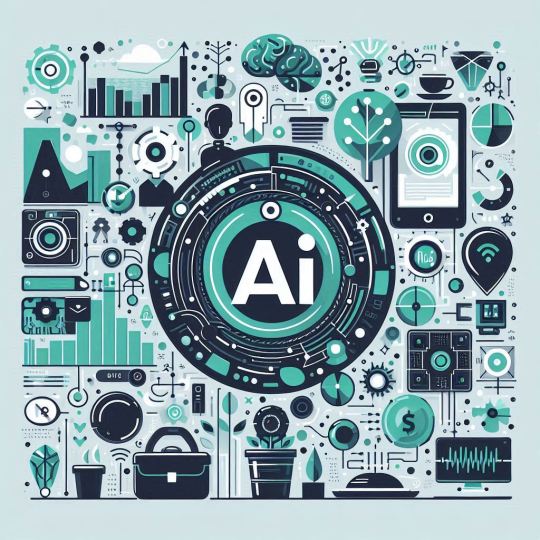
AI is revolutionizing business operations. Using AI-fuelled solutions means that you can automate processes, bring in positive customer experiences, and get insights. AI chatbots: AI can be utilized in the form of a conversational entity to support and perform backend operations, as well.
With a bit more specificity, say for example that an AI-powered recommendation engine recommends products to customers based on their browsing history and purchase patterns (as the use case of retail). This helps to increase the sales and improve the shopping experience.
3. Prioritize Cybersecurity
Cybersecurity is of utmost important as more and more business transitions towards digital platforms. Businesses need to part with a more substantial amount of money on advanced protective measures so that they can keep sensitive data private and continue earning consumer trust. Regular security audits and training of employees can reduce these risks.
Example: A financial services firm may implement multi-factor authentication (MFA) for all online transactions, regularly control access to Internet-facing administrative interfaces and service ports as well as the encryption protocols to secure client data from cyberattacks.
4. Optimizing Remote and Hybrid Working Models

Remote / hybrid is the new normal Remote teams force companies to implement effective motivation and management strategies. Collaboration tools and a balanced virtual culture can improve productivity and employee satisfaction.
- Illustration: a Tech company using Asana / Trello etc. for pm to keep remote teams from falling out of balance. They can also organise weekly team-building activities to keep a strong team spirit.
5. Focus on Customer Experience
Retention and growth of the sales follow-through can be tied to high quality customer experiences. Harness data analytics to deepen customer insights and personalize product offers making your marketing campaigns personal: a customer support that is responsive enough can drive a great level of returning customers.
Example – For any e-commerce business, you can take user experience feedback tools to know about how your customers are getting along and make necessary changes. Custom email campaigns and loyalty programs can also be positively associated with customer satisfaction and retention.
6. Digitalization Investment

It is only the beginning of digital transformation which we all know, is key to global competitiveness. For streamlining, companies have to adopt the use advanced technologies such as Blockchain Technology and Internet of Things (IoT) in conjunction with cloud computing.
IoT example : real-time tracking and analytics to optimize supply chain management
7. Enhance Employee Skills
Develop Your Employees: Investing in employee development is key to succeeding as a business. The training is provided for the folks of various industries and so employees can increase their skills that are needed to work in a certain company. Employee performance can be enhanced by providing training programs in future technology skills and soft skills and job satisfaction.
Example: A marketing agency can host webinars or create courses to teach people the latest digital marketing trends and tools This can help to keep employees in the know which results in boosting their skills, making your campaigns successful.
8. Diversify Supply Chains

The ongoing pandemic has exposed the weaknesses of global supply chains. …diversify its supply base and promote the manufacturing of drugs in Nigeria to eliminate total dependence on a single source. In return, this approach increases resilience and reduces exposure to the risks of supply chain interruption.
- E.g., a consumer electronics company can source components from many suppliers in various regions. In so doing, this alleviates avoidable supply chain interruptions during times of political tensions or when disasters hit.
9. Make Decisions Based on Data
A business database is an asset for businesses. By implementing data, they allow you to make decisions based on the data that your analytics tools are providing. For example, sales analysis lets you track trends and better tailor your goods to the market.
Example: A retail chain can use data analytics to find out when a customer buys, and it change their purchasing policies. This can also reduce overstock and stockouts while overall, increasing efficiency.
10. Foster Innovation
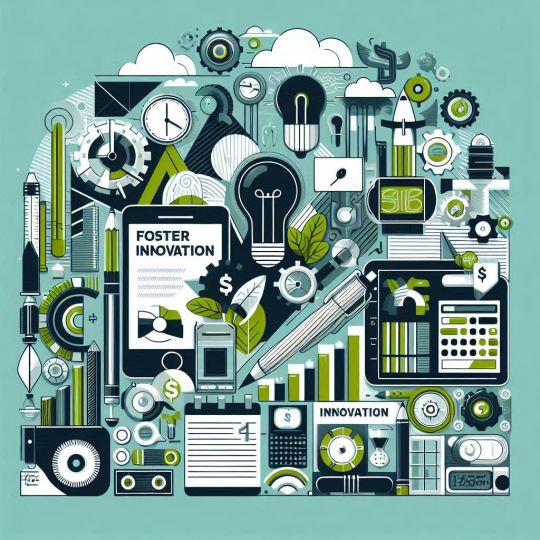
Business Growth Innovation is Key A culture of creativity and experimentation should be established in companies. Funding R&D and teaming with startups can open many doors to both solve problems creatively but also tap into new markets.
Example: A software development firm could create an innovation lab where team members are freed to work on speculative projects. Moreover, work with start-ups on new technologies and solutions.
By adopting these strategies, businesses can navigate the turbulence for 2024 and roll up market — progressive.AI with an evolving dynamic market, being ahead of trends and updated is most likely will help you thrive in the business landscape.
#ai#business#business strategy#business growth#startup#fintech#technology#tech#innovation#ai in business
2 notes
·
View notes
Text
I want to formally write up my digital note-taking system as someone with autism and ADHD at some point, complete with screenshots. I've always been trying to reduce it and simplify it but I've accepted that it's always going to be difficult for other people to implement because I'm obsessed with organization and have been refining the system over years.
I've been reading Building a Second Brain by Tiago Forte and have loosely adapted the PARA concept (Projects, Areas, Resource, Archives). I think it's brilliant to make notes more actionable. I want to organize such that it's easier to access notes most useful to me, and less-relevant-and-immediately-actionable notes like resources and finished projects are kept but neatly put away for later use and not cluttering up the space.
Basically, most of my personal and reference notes are in Notion. There I keep a list of things like my goals, my spending, my project planning, and reference materials I've collected over the years related to things like health, career development, recipes, etc.
However, Notion is a clunky experience on mobile. There is also no offline support - well, not proper offline support, anyway. That's because it's fundamentally a web application.
For quick notes I take on the go, reminders, and shopping lists, I use Google Keep. I can't understate how I haven't found a better app for this. Imagine a dynamic sticky notes board that syncs across devices and is easy to add and remove from. I can send notes to myself in the future in less than a minute and it basically runs my life. Every so often, I copy down important notes from Google Keep into Notion. I think basically everyone should use Google Keep, but especially for people with ADHD. Often we think of things in the moment, but they aren't relevant. I always jot down something I remember and send a reminder to myself when I can take action with it.
Finally, as much as I think Notion is great for note-taking, I actually use Obsidian for any deeper knowledge databases. I'm going to experiment and use Obsidian as my main school notes hub when I go back to school. I have a personal Obsidian wiki for programming. Obsidian is essentially offline Notion with less emphasis on databases. The linking between pages and seeing a map of how concepts are related to one another is extremely powerful.
And although I don't use it as often, I really like Notability on my iPad with an Apple Pencil. I use it for making digitized diagrams and as a study tool. The act of writing over typing codifies things in my memory.
I used to use Microsoft OneNote a lot. I miss when it was free. I appreciated how flexible it was. I used a tablet to write directly on the pages. However, I found that I hated formatting in it over time, and I preferred using Markdown as it's more universal. (Even my resume is written in LaTeX. I used to code every assignment in HTML/CSS because I wanted perfect formatting.) Overall, OneNote was clunky and difficult to keep consistently formatted.
On top of my digital system, I have a physical bullet journal and whiteboards. I think having multiple spaces that remind of of my tasks and ideas and to jot them down, and then moving them around helps me remember them. I could streamline the process a bit, but I really don't like compromising physical note-taking. I'm a firm believer in physical and non-cloud backups of information. I don't want to put all of my eggs in one basket and rely on Internet infrastructure. I also want to feel grounded. There are some hybrid digital/physical notebooks I might look into to keep the process simple, but I've been working with this system fine.
2 notes
·
View notes
Text
Azure Data Factory Training In Hyderabad
Key Features:
Hybrid Data Integration: Azure Data Factory supports hybrid data integration, allowing users to connect and integrate data from on-premises sources, cloud-based services, and various data stores. This flexibility is crucial for organizations with diverse data ecosystems.
Intuitive Visual Interface: The platform offers a user-friendly, visual interface for designing and managing data pipelines. Users can leverage a drag-and-drop interface to effortlessly create, monitor, and manage complex data workflows without the need for extensive coding expertise.

Data Movement and Transformation: Data movement is streamlined with Azure Data Factory, enabling the efficient transfer of data between various sources and destinations. Additionally, the platform provides a range of data transformation activities, such as cleansing, aggregation, and enrichment, ensuring that data is prepared and optimized for analysis.
Data Orchestration: Organizations can orchestrate complex workflows by chaining together multiple data pipelines, activities, and dependencies. This orchestration capability ensures that data processes are executed in a logical and efficient sequence, meeting business requirements and compliance standards.
Integration with Azure Services: Azure Data Factory seamlessly integrates with other Azure services, including Azure Synapse Analytics, Azure Databricks, Azure Machine Learning, and more. This integration enhances the platform's capabilities, allowing users to leverage additional tools and services to derive deeper insights from their data.
Monitoring and Management: Robust monitoring and management capabilities provide real-time insights into the performance and health of data pipelines. Users can track execution details, diagnose issues, and optimize workflows to enhance overall efficiency.
Security and Compliance: Azure Data Factory prioritizes security and compliance, implementing features such as Azure Active Directory integration, encryption at rest and in transit, and role-based access control. This ensures that sensitive data is handled securely and in accordance with regulatory requirements.
Scalability and Reliability: The platform is designed to scale horizontally, accommodating the growing needs of organizations as their data volumes increase. With built-in reliability features, Azure Data Factory ensures that data processes are executed consistently and without disruptions.
2 notes
·
View notes
Text
Going Over the Cloud: An Investigation into the Architecture of Cloud Solutions

Because the cloud offers unprecedented levels of size, flexibility, and accessibility, it has fundamentally altered the way we approach technology in the present digital era. As more and more businesses shift their infrastructure to the cloud, it is imperative that they understand the architecture of cloud solutions. Join me as we examine the core concepts, industry best practices, and transformative impacts on modern enterprises.
The Basics of Cloud Solution Architecture A well-designed architecture that balances dependability, performance, and cost-effectiveness is the foundation of any successful cloud deployment. Cloud solutions' architecture is made up of many different components, including networking, computing, storage, security, and scalability. By creating solutions that are tailored to the requirements of each workload, organizations can optimize return on investment and fully utilize the cloud.
Flexibility and Resilience in Design The flexibility of cloud computing to grow resources on-demand to meet varying workloads and guarantee flawless performance is one of its distinguishing characteristics. Cloud solution architecture create resilient systems that can endure failures and sustain uptime by utilizing fault-tolerant design principles, load balancing, and auto-scaling. Workloads can be distributed over several availability zones and regions to help enterprises increase fault tolerance and lessen the effect of outages.
Protection of Data in the Cloud and Security by Design
As data thefts become more common, security becomes a top priority in cloud solution architecture. Architects include identity management, access controls, encryption, and monitoring into their designs using a multi-layered security strategy. By adhering to industry standards and best practices, such as the shared responsibility model and compliance frameworks, organizations may safeguard confidential information and guarantee regulatory compliance in the cloud.
Using Professional Services to Increase Productivity Cloud service providers offer a variety of managed services that streamline operations and reduce the stress of maintaining infrastructure. These services allow firms to focus on innovation instead of infrastructure maintenance. They include server less computing, machine learning, databases, and analytics. With cloud-native applications, architects may reduce costs, increase time-to-market, and optimize performance by selecting the right mix of managed services.
Cost control and ongoing optimization Cost optimization is essential since inefficient resource use can quickly drive up costs. Architects monitor resource utilization, analyze cost trends, and identify opportunities for optimization with the aid of tools and techniques. Businesses can cut waste and maximize their cloud computing expenses by using spot instances, reserved instances, and cost allocation tags.
Acknowledging Automation and DevOps Important elements of cloud solution design include automation and DevOps concepts, which enable companies to develop software more rapidly, reliably, and efficiently. Architects create pipelines for continuous integration, delivery, and deployment, which expedites the software development process and allows for rapid iterations. By provisioning and managing infrastructure programmatically with Infrastructure as Code (IaC) and Configuration Management systems, teams may minimize human labor and guarantee consistency across environments.
Multiple-cloud and hybrid strategies In an increasingly interconnected world, many firms employ hybrid and multi-cloud strategies to leverage the benefits of many cloud providers in addition to on-premises infrastructure. Cloud solution architects have to design systems that seamlessly integrate several environments while ensuring interoperability, data consistency, and regulatory compliance. By implementing hybrid connection options like VPNs, Direct Connect, or Express Route, organizations may develop hybrid cloud deployments that include the best aspects of both public and on-premises data centers. Analytics and Data Management Modern organizations depend on data because it fosters innovation and informed decision-making. Thanks to the advanced data management and analytics solutions developed by cloud solution architects, organizations can effortlessly gather, store, process, and analyze large volumes of data. By leveraging cloud-native data services like data warehouses, data lakes, and real-time analytics platforms, organizations may gain a competitive advantage in their respective industries and extract valuable insights. Architects implement data governance frameworks and privacy-enhancing technologies to ensure adherence to data protection rules and safeguard sensitive information.
Computing Without a Server Server less computing, a significant shift in cloud architecture, frees organizations to focus on creating applications rather than maintaining infrastructure or managing servers. Cloud solution architects develop server less programs using event-driven architectures and Function-as-a-Service (FaaS) platforms such as AWS Lambda, Azure Functions, or Google Cloud Functions. By abstracting away the underlying infrastructure, server less architectures offer unparalleled scalability, cost-efficiency, and agility, empowering companies to innovate swiftly and change course without incurring additional costs.
Conclusion As we come to the close of our investigation into cloud solution architecture, it is evident that the cloud is more than just a platform for technology; it is a force for innovation and transformation. By embracing the ideas of scalability, resilience, and security, and efficiency, organizations can take advantage of new opportunities, drive business expansion, and preserve their competitive edge in today's rapidly evolving digital market. Thus, to ensure success, remember to leverage cloud solution architecture when developing a new cloud-native application or initiating a cloud migration.
1 note
·
View note
Text
Future of data science?
Exciting developments await the future of data science as it evolves. Data scientists can expect to see greater integration of artificial intelligence (AI) and machine learning, facilitated by automation and AutoML, which will make data analysis more accessible. Proficiency in big data and real-time analytics will be crucial as the volume and complexity of data continue to expand. Additionally, ethical considerations such as privacy protection, bias detection, and responsible AI implementation will remain important focal points. Furthermore, data science will involve increased interdisciplinary collaboration that bridges technical expertise with domain knowledge and ethics.
Explainable AI will be necessary for the development of trust and compliance, while edge and IoT analytics will cater for the increased demand of IoT devices. In this way, data visualisation and storytelling skills will still be vital. Data scientists will need to adapt as organisations shift to hybrid and multi-cloud environments. This field will require continuous learning for success. The next quantum leap for data science with quantum computing. Customization and personalization will also define data science; this will deliver specific solutions for particular business needs. In the data-driven era, it’s the data scientists that will excel.
If you are considering preparing for this promising future, Edure provides a wide variety of comprehensive data science courses designed for students of all skill levels. Edure has a comprehensive curriculum that includes introductory courses in basic data science concepts, tools and techniques for beginners and advanced programs targeted for experienced professionals. These courses will give you the knowledge and the skills that will enable you to succeed in the data-driven world of tomorrow. Therefore, whether a beginner or an expert desiring to remain up to date in data science, Edure courses are valuable for launching into or deepening one’s involvement in this promising domain.
For more information contact as
Edure | Learn to Earn
Aristo Junction, Thampanoor,
Thiruvananthapuram, Kerala , 695001
+91 9746211123 +91 9746711123
2 notes
·
View notes
Text
Hybrid Cloud Strategies with Azure Arc: My Practical Insight
Are you ready to unlock the true potential of hybrid cloud strategies? Look no further than Azure Arc, the game-changing solution that promises seamless integration and unparalleled flexibility. From streamlining operations to enhancing security, Azure Arc has revolutionized the way organizations harness the power of both on-premises and cloud environments. In this blog post, I’ll be diving into my practical insights on leveraging Azure Arc for your hybrid cloud journey. So buckle up as we explore the endless possibilities and unveil a new era in hybrid computing!
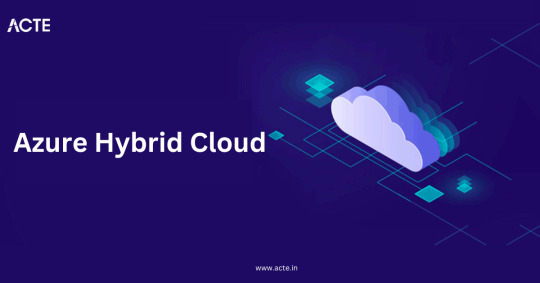
Introduction to Hybrid Cloud Strategies with Azure Arc
I’m under pressure to digitally transform in order to remain competitive. I’m looking to the cloud as a way to accelerate this transformation. Not all workloads, meanwhile, are appropriate for the public cloud. Some may require on-premises or edge computing due to data sovereignty or local regulations. Others may need to be kept on-premises due to performance requirements.
Hybrid cloud strategies allow me to keep some workloads on-premises or at the edge while still taking advantage of the agility and scalability of the public cloud. Azure Arc is a tool that can help me manage and monitor my hybrid cloud deployments. In this blog post, I will share my practical insight into using Azure Arc for my hybrid cloud deployments.
Benefits of Azure Arc Adoption & Challenges in Implementing it
In recent years, using the cloud has grown in popularity among organizations of all sorts. One of the major advantages of cloud computing is its scalability; I can quickly add or remove capacity as needed without making a long-term commitment. Azure Arc is a hybrid cloud solution that allows me to take advantage of the benefits of the cloud while still maintaining control over my data and applications.
There are several benefits to adopting Azure Arc, including:
Increased flexibility and scalability: As mentioned above, one of the major advantages of Azure Arc is its scalability. I can easily add or remove capacity as needed, without making a long-term commitment. This can help me save money on IT infrastructure costs, as well as ensure that I have the necessary resources available when I need them.
Improved disaster recovery: Another benefit of Azure Arc is improved disaster recovery capabilities. With this solution in place, I can quickly recover from outages or disasters with minimal downtime. This can help keep my business up and running even in the event of a major problem.
Enhanced security: Security is always a major concern for me, especially when it comes to sensitive data. With Azure Arc in place, I can take advantage of enhanced security features such as encrypted data storage and multi-factor authentication. This can help give me peace of mind knowing that my data is safe and secure.
Lower maintenance costs: Maintaining on-premises IT infrastructure can be costly and time-consuming. Azure Arc helps me lower maintenance costs by simplifying resource management and automating tasks.
Understanding the Necessary Requirements for Azure Arc Usage
Azure Arc is a cloud management platform that enables me to optimize my hybrid cloud deployments. It provides a unified control plane for managing resources across on-premises, edge, and multi-cloud environments. Azure Arc also simplifies the process of integrating Azure services with on-premises and third-party solutions.
In order to use Azure Arc, I must first have an Azure subscription. I must also have the desired Azure Resource Manager (ARM) template or Resource Manager package deployed in my environment. Azure Arc uses these templates or packages to deploy and manage resources in the target environment.
Once the necessary requirements are met, I can begin using Azure Arc to manage my hybrid cloud deployments. I can use the platform to provision and manage resources, monitor activity and usage patterns, set policies and governance controls, etc. Additionally, I can use Azure Arc to connect my on-premises or third-party solutions with Azure services. This allows me to take advantage of the many benefits that Azure has to offer, such as scalability, high availability, security, and so on.
Steps for Setting Up Azure Arc Configurations
Azure Arc is a cloud service that enables me to manage and monitor my resources whether they’re running on Azure, on-premises, or in other clouds. With Azure Arc, I can use the same tools and portal experiences I’m used to in Azure to centrally govern all my infrastructure.
Setting up an Azure Arc configuration is simple and straightforward. I just need to follow these simple instructions:
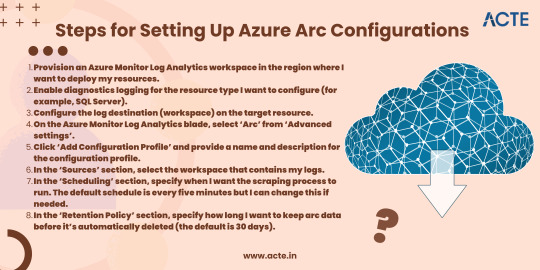
9a. If I want to scrape data from multiple workspaces, I can repeat steps 5–8 for each workspace.
Troubleshooting Common Issues Related to Hybrid Cloud with Azure Arc If I’m working with hybrid cloud and Azure Arc, there are a few common issues I may run into. Here’s how to troubleshoot them:
I can’t see all of my resources in the Azure portal.
Make sure that I’ve selected the correct subscription in the Azure portal. If I’m still not seeing all of my resources, check the resource provider status page to see if there are any known issues.
I’m getting errors when trying to deploy resource group templates.
When deploying resource group templates, make sure that the template includes all required resources for Azure Arc enabled resource providers. Consult the Azure Resource Manager documentation for further details.
My hybrid cloud app isn’t running correctly.
If I’m having trouble with a hybrid cloud app, first check the logs to see if there are any error messages. Then, try redeploying the app using a different approach (for example, using Azure CLI or PowerShell instead of the Azure portal).
Unifying Multiple Clouds with One Platform:
A Comprehensive Overview Azure Arc is a cloud management platform that enables me to unify multiple clouds with one platform. Azure Arc provides a comprehensive overview of my resources and allows for central management and policy enforcement across all of my Azure subscriptions. Azure Arc also provides integrated security and compliance features to help me secure my data and meet regulatory requirements.
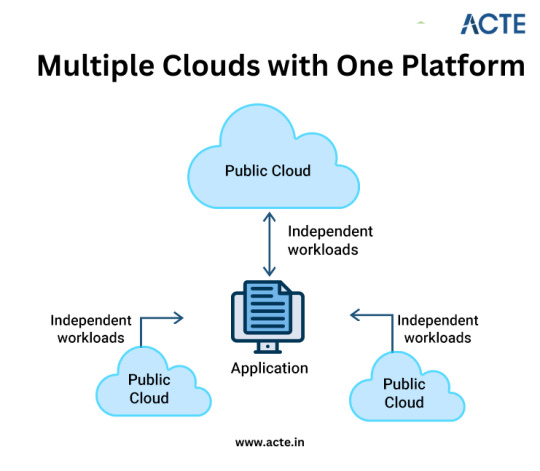
Best Practices for Utilizing Hybrid Cloud Strategies with Azure Arc
When it comes to hybrid cloud strategies with Azure Arc, there are a few best practices that I should keep in mind. For starters, I should make sure that I have a clear understanding of my workloads and how they need to be supported. I should also have a clear picture of my network topology and how the different components will interact with each other. Additionally, it’s important to have a plan for data security and management, as well as monitoring and logging. By keeping these things in mind, I can be sure that my hybrid cloud strategy with Azure Arc is as effective as possible.
All things considered, Azure Arc is an impressive offering from Microsoft that can help me realize the potential of hybrid cloud technology. By leveraging my existing infrastructure while taking advantage of the benefits offered by public clouds like Azure, I can enjoy features such as greater scalability and improved flexibility to meet changing needs. Whether I need basic access control or more advanced policies to manage my distributed systems, my practical insight on using Azure Arc for my hybrid cloud strategy shows how powerful this platform is in streamlining and optimizing cloud operations for various enterprises.
2 notes
·
View notes
Text
Pentaho Data Integration & Analytics: Expert Consulting by Helical IT Solutions
What Is Pentaho Data Integration (PDI)?
Pentaho Data Integration (PDI), also known as Kettle, is an open-source ETL (Extract, Transform, Load) tool designed to help organizations manage data workflows efficiently. Acquired by Pentaho in 2005, Kettle evolved into PDI, with both a freely available community edition and a more feature-rich enterprise version.
While the community version is suitable for basic ETL tasks, the enterprise edition of PDI offers enhanced features such as scalability, advanced security, real-time data processing, and integration with enterprise data platforms. This makes it the perfect option for settings with a lot of data and complexity.
Pentaho offers PDI as part of its Business Intelligence (BI) suite, enabling end-to-end data operations such as: Data cleaning and transformation, Data migration between databases or systems, Bulk data loading and processing, Data quality enforcement, Governance and compliance
Organizations looking to implement or scale these capabilities often rely on Pentaho data integration consulting services to ensure efficient architecture, optimized workflows, and successful deployment.
PDI consists of several core components that support various stages of the ETL process:
Spoon – A visual design tool for ETL developers to build data transformations (data flows) and jobs (execution workflows).
Pan – A command-line utility used to execute transformations created in Spoon.
Kitchen – Executes jobs designed in Spoon from the command line or automated scripts.
Carte – A lightweight web server for remotely executing and monitoring ETL jobs.
With its modular architecture and strong community support, PDI is a leading choice for businesses looking to build scalable and automated data pipelines. Helical IT Solutions offers expert Pentaho data integration consulting services to help organizations implement, customize, and optimize PDI for their specific data environments.
Why Choose Pentaho for Data Integration and Analytics?
Pentaho Data Integration (PDI) is a powerful and flexible ETL platform that helps organizations unify, transform, and analyse data from multiple sources. With support for cloud, big data, and traditional systems, Pentaho enables end-to-end data workflows—from ingestion to insightful dashboards.
Businesses choose Pentaho because it offers:
A user-friendly, visual interface for designing data pipelines
Tight integration with business intelligence and reporting tools
Scalable support for real-time and batch processing
Flexible deployment (on-premises, cloud, or hybrid)
Open-source extensibility with enterprise-grade features
Pentaho becomes a complete solution for building modern, efficient, and customized data architectures tailored to your business needs.
Common Data Challenges Businesses Face Without a Proper ETL Solution
Many businesses struggle with data chaos stemming from disparate sources, inconsistent formats, and a lack of proper data governance. Without a robust ETL (Extract, Transform, Load) solution, they face challenges like:
Inaccurate Reporting: Relying on manual processes or partial data leads to flawed insights and poor decision-making.
Operational Inefficiencies: Time is wasted on data reconciliation and cleaning, diverting resources from core business activities.
Limited Scalability: Growing data volumes overwhelm existing systems, hindering expansion and agility.
Data Silos: Critical information remains isolated, preventing a unified view of the business.
Compliance Risks: Difficulty in tracking and auditing data can lead to regulatory non-compliance.
These issues directly impact profitability and growth. This is where a powerful ETL tool like Pentaho Data Integration & Analytics becomes crucial.
How Helical IT Solutions Enhances Your Pentaho Implementation
While Pentaho Data Integration & Analytics is a powerful tool, maximizing its potential requires specialized expertise. Helical IT Solutions elevates your Pentaho implementation by offering:
Deep Pentaho Expertise: Our certified consultants possess extensive experience across the entire Pentaho suite (PDI, Analyzer, Report Designer, etc.), ensuring you leverage every feature.
Tailored Solutions: We don't just implement; we customize Pentaho to perfectly align with your unique business needs, data sources, and analytical goals.
End-to-End Services: From initial consultation and data strategy to development, integration, migration, support, and training, we cover the full project lifecycle.
Optimized Performance: We focus on building efficient data pipelines, optimizing performance, and ensuring data quality for accurate, timely insights.
Cost-Effective Implementation: As a Pentaho partner with a strong track record, we deliver high-quality solutions that maximize your ROI and minimize overhead.
What Helical IT Solutions Offers
Certified Pentaho consulting and development
Pentaho Data Integration (Kettle) services
Pentaho Report Designer (PRPT) and dashboard development
Embedding Pentaho analytics in web applications
SSO, high availability, and load balancing setup
OLAP schema modelling and advanced analytics
End-to-end implementation, training, and post-deployment support
Helical IT Solutions delivers expert Pentaho consulting and implementation services, enabling businesses to unlock the full potential of their data integration and analytics initiatives with tailored, scalable, and reliable solutions
Why Helical IT Solutions Is the Right Pentaho Partner for You
With years of hands-on experience in implementing Pentaho Data Integration across industries, Helical IT Solutions brings the technical expertise, flexibility, and client-first approach needed for successful data projects. We focus on delivering custom, scalable, and cost-effective solutions—whether you're starting from scratch or optimizing an existing setup.
Our deep understanding of both community and enterprise editions, combined with a strong track record in ETL, BI, and analytics, makes us a trusted partner for businesses looking to turn data into actionable insights.
Contact Us for Expert Pentaho Consulting Services
Contact Helical IT Solutions for a demo, client references, or to discuss your requirements:
Email: [email protected] | [email protected]
Phone: +91-7893947676
Experience the difference of working with a dedicated Pentaho partner focused on your success.
0 notes
Text
Can You Build the Next TikTok? Here’s What You Need to Know in 2025
TikTok's massive success has sparked a wave of innovation in the short-form video space. But building a similar platform doesn’t mean copying — it means creating something unique, scalable, and monetizable. That’s where finding a reliable development partner for social video apps becomes essential. With access to the right infrastructure, you can fast-track development without compromising on performance or design.
For those planning to enter the video-sharing space, it’s worth exploring custom solutions modeled after successful short-video platforms. From content discovery to creator tools, modern clone apps offer plug-and-play flexibility with room to innovate. These platforms aren’t just about videos; they’re about creating a community, retaining users, and enabling creator-driven revenue.
What Makes TikTok Work – And How You Can Do It Differently
TikTok’s core success lies in its algorithm, simplicity, and creator-first approach. But there's still room for alternatives that offer:
Regional language support
Creator revenue-sharing options
Content categories that cater to niche audiences
Tools that foster community interactions
Launching a differentiated TikTok-like app isn’t about reinventing the wheel—it’s about fine-tuning it for specific needs.
Must-Have Features for Your TikTok Alternative
To compete with or even complement TikTok, your platform should include:
AI-driven personalized feeds
Easy-to-use video editing tools
Livestreaming and event features
Support for user monetization
Scalable cloud infrastructure
These are not just features—they're strategic advantages that help with acquisition and retention.
Monetization Models That Actually Work
A TikTok clone can generate revenue in several ways:
Offering ad space for businesses
Partnering with influencers for branded content
Implementing in-app purchases for premium tools or features
Subscription plans for creators or viewers
A hybrid monetization approach ensures steady income from multiple streams.
Why Choose Miracuves for TikTok-Like App Development?
Miracuves brings a powerful combination of technical expertise and market insight. Their TikTok clone development framework is robust, customizable, and future-ready — allowing startups to go live in record time while maintaining top-tier performance.
Final Thoughts
The short-video boom is far from over. If you’ve ever considered launching your own video-sharing platform, 2025 might be your moment. With the right tech partner and a user-first strategy, you can build more than just an app — you can create a thriving ecosystem.
#TikTok clone app#TikTok clone development company#short video app development#video sharing app like TikTok#create TikTok clone#white-label TikTok clone#TikTok alternative app#social media app development#video streaming app clone
0 notes